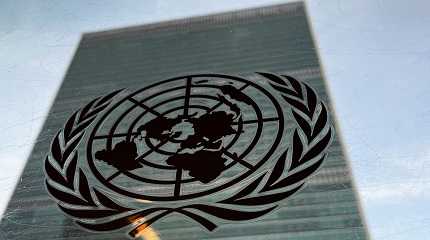
UNITEDC NATIONS, Jul 08 (APP): Over 9,000 civilians, including over 500 children, have been killed since Russia’s invasion of Ukraine began in February 2022 — 500 days ago, the United Nations said Thursday, as the United States moves to supply cluster weapons to boost the Eastern European country’s military in its fight against Moscow’s entrenched forces.
The UN also warned that the true number of fatalities could be much higher than what they have been able to confirm.
May and June have seen an increase in the number of civilians killed, the UN added, after a relative decline in civilian fatalities in the first four months of the year. This weekend marks exactly 500 days since the war began.
“Today we mark another grim milestone in the war that continues to exact a horrific toll on Ukraine’s civilians,” said Noel Calhoun, the deputy head of the UN’s Human Rights Monitoring Mission in Ukraine (HRMMU)
The HRMMU reported that overall monthly casualties decreased earlier this year when compared to 2022, but the average number rose again in May and June, with the last two weeks among some of the deadliest since fighting began.
Recent attacks include the missile strike on a busy shopping area in the eastern city of Kramatorsk on the evening of 27 June, which killed 13 people.
The information about civilian deaths is contained in the latest report on civilian casualties in Ukraine, published by the UN Human Rights Office, OHCHR, which covers the period from the start of the war through 30 June 2023.
Overall, 25,170 civilian casualties were recorded, with 9,177 killed and 15,993 injured.
Of this number, and whose sex was known, 61 per cent were men and 39 per cent were women. Boys comprised more than 57 per cent of casualties among children whose sex was known, and girls 42.8 per cent.
OHCHR also received information regarding 22 civilian casualties in Russian-occupied Crimea and the city of Sevastopol. They included five men and one woman who were killed, and 16 people who were injured – two children and 14 adults, whose sex is yet unknown.
Meanwhile, experts deployed by the International Atomic Energy Agency (IAEA) at the Zaporizhzhya Nuclear Power Plant (ZNPP) in southern Ukraine have not observed any visible indications of mines or explosives there, Director-General Rafael Mariano Grossi said on Wednesday.
Europe’s largest nuclear plant has been in Russian hands since the early days of the war, and both sides have accused the other of shelling the facility.
The IAEA had previously indicated that it was aware of reports that mines and other explosives have been placed in and around the plant, which is located on the frontline of the conflict.
“Following our requests, our experts have gained some additional access at the site. So far, they have not seen any mines or explosives, but they still need more access, including to the rooftops of reactor units 3 and 4 and parts of the turbine halls,” Grossi said, expressing hope that access will be granted soon.
The experts have inspected parts of the plant in recent days and weeks, and continued to conduct regular walkdowns across the site.
On Wednesday, they were “also able to check a wider section of the perimeter of the ZNPP’s large cooling pond than previously”, the IAEA said.
Meanwhile, the Biden administration is expected to announce Friday that the U.S. will provide cluster munitions to Ukraine, a controversial move, according to American media reports.
President Joe Biden signed a presidential waiver on the transfer of the weapons in recent days, the reports said, quoting American officials.
The dual-purpose improved conventional munitions, or DPICMs, are surface-to-surface warheads that explode and disperse multiple small munitions or bombs over wide areas — bringing more widespread destruction than single rounds. The rounds can be charges that penetrate armoured vehicles, or they can shatter or fragment to be more dangerous for people.
Human rights groups oppose their use because of concerns that unexploded bomblets, or duds, could explode after battle, potentially injuring or killing innocent civilians.
Reacting to the US move, Russia’s Ambassador to Belarus Boris Gryzlov said that Washington’s intention to provide cluster munitions to Ukraine is “a move of desperation” as Kyiv’s counteroffensive did not go according to plan.
“Now, the ‘hawks’ in the West have realized that the much-advertised counter-offensive of the Ukrainian armed forces did not go according to plan, so they are trying at all costs to give at least some impetus to it. In fact, it is a move of desperation,” Gryzlov told Russian state news agency TASS.
He claimed the US has been talking about potentially sending the controversial weapons to Ukraine since the spring.
If the US decides to proceed with the move, it would once again prove that “neither Washington nor its NATO allies want peace, and they will stop at literally nothing in their bid to achieve the elusive goal of inflicting a strategic defeat on Russia,” he added.




